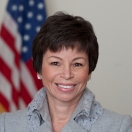
The American workforce today is not our parents’ workforce. In the last generation, we broke down barriers so that more women could enter the workforce. In recent years, we have seen economic changes that have made those paychecks that women bring home essential to their family budgets. Two-thirds of American families with kids are headed by two working parents or a single parent. Women now make up half of all American workers. Women and men are facing demands from work, education demands, child care and elderly parent care demands, and retirement demands.
We need a 21st century workplace to meet the changing needs of the 21st century workforce. This is important not only for employees, but also for employers – because the companies that provide flexible workplaces that address the needs of this changing workforce are the companies that will stay productive, competitive and profitable in the 21st century.
These are the findings of a new report issued by the President’s Council of Economic Advisors, and this is the reason why the White House Council on Women Girls hosted a path-breaking forum yesterday addressing Workplace Flexibility. The White House Workplace Flexibility Forum brought together a diverse, accomplished group—from academia, labor, government, media, non-profits, and business—to focus on this issue and its implementation at all levels in both the public and private sector.
- Video of Breakout 1: The Benefits of Workplace Flexibility, CEA Chair Christina Romer
- Video of Breakout 2: Best Practices Day-to-Day, GSA Administrator Martha Johnson
- Video of Breakout 3: Best Practices Day-to-Day, OPM Director John Berry
- Video of Breakout 4: Best Practices for Small Business, SBA Administrator Karen Mills
- Video of Breakout 5: The Changing American Workforce, Domestic Policy Advisor Melody Barnes
- Video of Closing Session: President Obama's Remarks
Workplace flexibility affects both men and women alike. And now, as we consider how to build a more sustainable and successful economic future, a conversation about this issue has never been more important for America’s workers and their employers. And to underscore the importance of this issue to the Administration, both the First Lady and the President of the United States addressed the participants at the Forum.
It was my honor to kick-off the afternoon’s event and introduce First Lady Michelle Obama, who spoke about her own struggles to balance her career and family commitments, as well as her experience as a manager who implemented more flexible work policies. She told listeners that when her employees have been allowed more time to be better parents, they are better workers. They stayed in their jobs longer and were more productive. This notion may seem contradictory, but it is a finding that is echoed by many of our country’s leading businesses.
We then heard from an experienced panel, moderated by Claire Shipman, author of Womenomics and senior correspondent for ABC’s Good Morning America. Dr. Christy Romer, Chair of the Council of Economic Advisers, discussed its report, “Work-life Balance and the Economics of Workplace Flexibility,” which lays out the wide variety of flexibility strategies now in use, and the economic benefits to workers, companies, and our nation’s economy. Dr. Romer was joined by the Secretary of Labor, Hilda Solis; the CEO of Campbell’s Soup, Douglas Conant; and Campbell’s Soup Communications Director, Beth Jolly. From the perspective of both the public and private sector, these panelists provided real-life examples of best practices, which we hope will be adopted in more workplaces around the country.
In several break-out sessions, small groups discussed their own experiences with workplace flexibility, from both an analytical and a practical standpoint. They shared success stories, and the unique combination of participants in each session made for open and honest discussions.
Following the break-outs, the group reconvened to hear an announcement from John Berry, Director of the Administration’s Office of Personnel and Management (OPM). Director Berry rolled-out the federal government’s plan to respond to the new needs of our changing workforce. This will be a pilot program to see how OPM employees respond to an environment in which they are provided with clear instructions about what needs to get done and then allows them to work independently to meet objectives and deadlines, while only measuring results in terms of productivity.
Following John Berry, President Obama wrapped up the day’s program with remarks reinforcing his administration’s commitment to this issue—not just as a “women’s issue,” but as an issue that affects the well-being of our families, the success of our businesses, and the future of our nation’s economy. He praised the business representatives who have embraced workplace flexibility, and put them on notice that the government will be creating the working conditions necessary to compete with them for the best and brightest talent available. By doing so, the President pledged to support an improvement in flexibility for federal employees and, thus, an overall improvement in service to the American people.
The conversations started at this Forum today will continue in the coming months in places all around the country. By engaging directly with communities, we will continue to learn about practices and challenges to implementation on the ground, in local government and local businesses. All of these voices must be heard, because it’s an issue that fundamentally affects how all Americans work and live.
I encourage you to stay connected with the White House Council on Women and Girls for updates and progress reports on this very important issue.
Valerie Jarrett is a Senior Advisor to the President and Chair of the White House Council on Women and Girls



